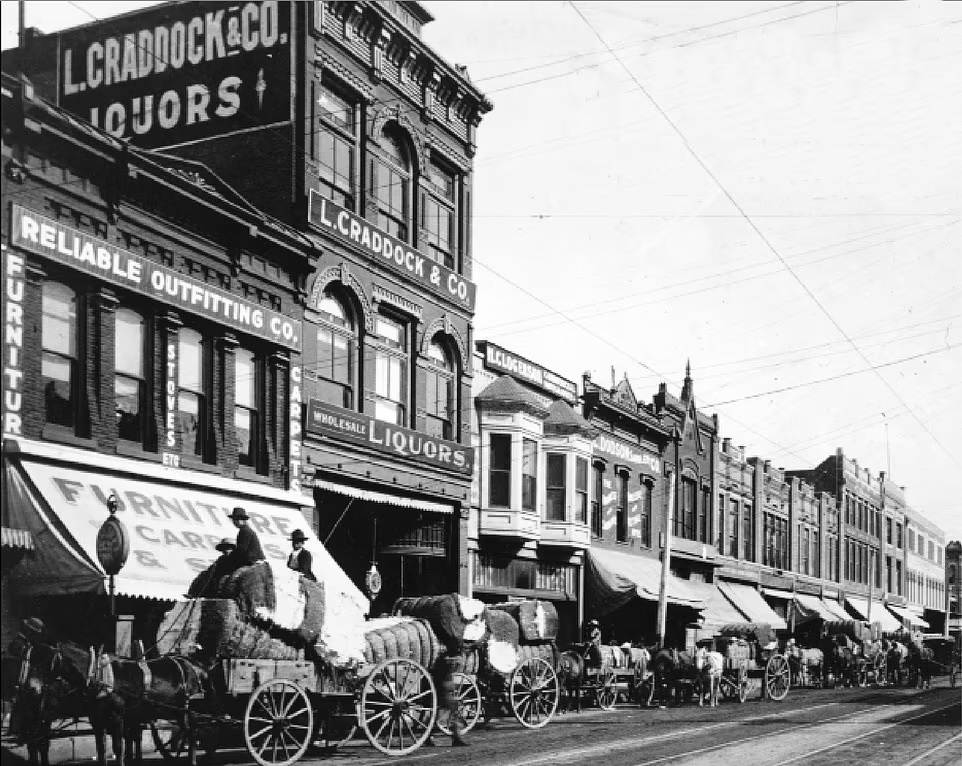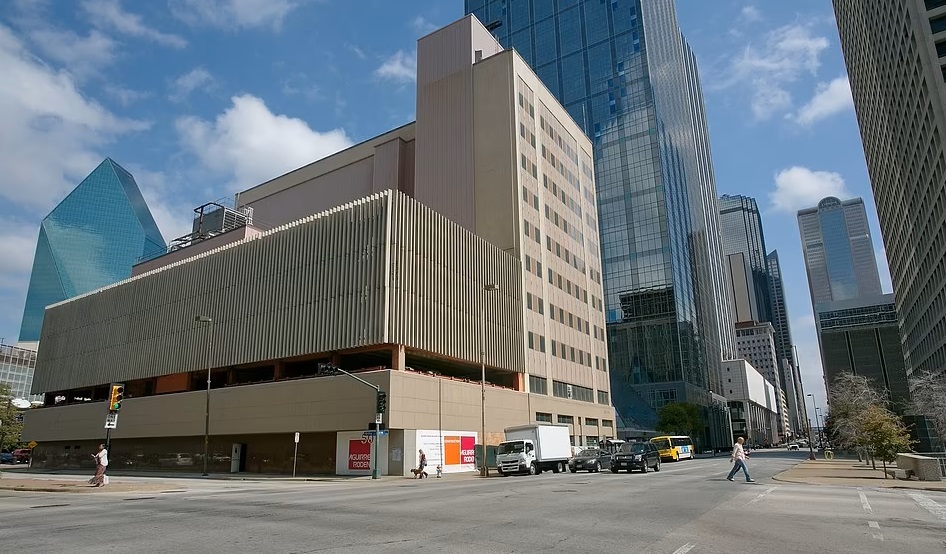Found these two pics in a newspaper somewhere:
Dallas, late 19th century:

The same block in Dallas, today:

With all the faults and problems associated with living in the 19th century, I still prefer the look of that time to the soulless concrete ghastliness of today.
But you all knew I would feel that way.

That’s the nice thing about small towns. A lot of them still have the look of the first picture.
I agree that the LOOK of the era was more esthetically pleasing, but think of the SMELL.
Just looking at the number of horses pulled up in front of the wagons leaves me trying to imagine a typical Dallas summer afternoon, with its cool breezes and shady areas…Nah, we’re talking 105°F in the shade, and there’s no bloody shade in sight.
The effluvium wafting off the streets in that heat would probably be enough to knock me sideways. That being said, looking at the picture it’s amazing how clean the street is; probably a half a battalion of street sweepers just out of view waiting to recycle all that wonderful fertilizer.
The first picture has a nice variety of buildings while the second is stark and gloomy.
The 2nd represents a soul-less existence without meaning.
As was said of Oakland a while back: There is no there there.
As to the streets:
About 1910-1915, the NYT ran a very large article saluting the wonder of the internal combustion engine and its replacement of dray animals in the City, a city whose budget was dominated by the need to constantly sweep the streets, and the removal of dead dray animals from them. The ICE was a significant improvement in the environment of large cities, and a benefit to the health of those who lived and worked there. They actually said that, and it must embarrass the hell out of today’s management.
There was a meeting of large city management types around 1900, I think held in France or Germany, where they discussed the horse and horse dung situation they were dealing with, and the projections of how bad it was expected to get. They knew they had nearly reached the limits of what was practical. Getting rid of the dung was a MAJOR problem. Farms near the cities could only use so much, and NYFC was not located well in that area. At some point they started filling barges and towing them out to sea for dumping. The volume that a horse produced per day, and the number of horses needed for commerce in a city was mind boggling.
Apparently the steps you see in front of the Brownstones in that city were designed to get the doorway above the effluvient that the streets were literally awash in. Vacant lots tended to acquire a twenty foot high buildup almost overnight. The ever present dust and smell was overwhelming.
The dawn of motorized vehicles salvaged large cities, unfortunately.
The old buildings have detailing above the windows and topping the facades. Interesting little details. Most people in the day probably didn’t pay much attention to the detailing except to describe where a business was – “It’s in the building with the tall triangle in the brickwork”, or something like that.
The modern building that replaced them are (to quote Monty Pyhton) “Irrepressibly drab and awful”. Especially the one in the foreground. It’s so…BEIGE. Even my big bother’s Girder and Panel building set was more colorful, even though the panels looked just like the exteror of the beige one. No detailing at all. sigh.
The building in the left background is a bit interesting, but who would want to live and work in a building modelled after a crystal?